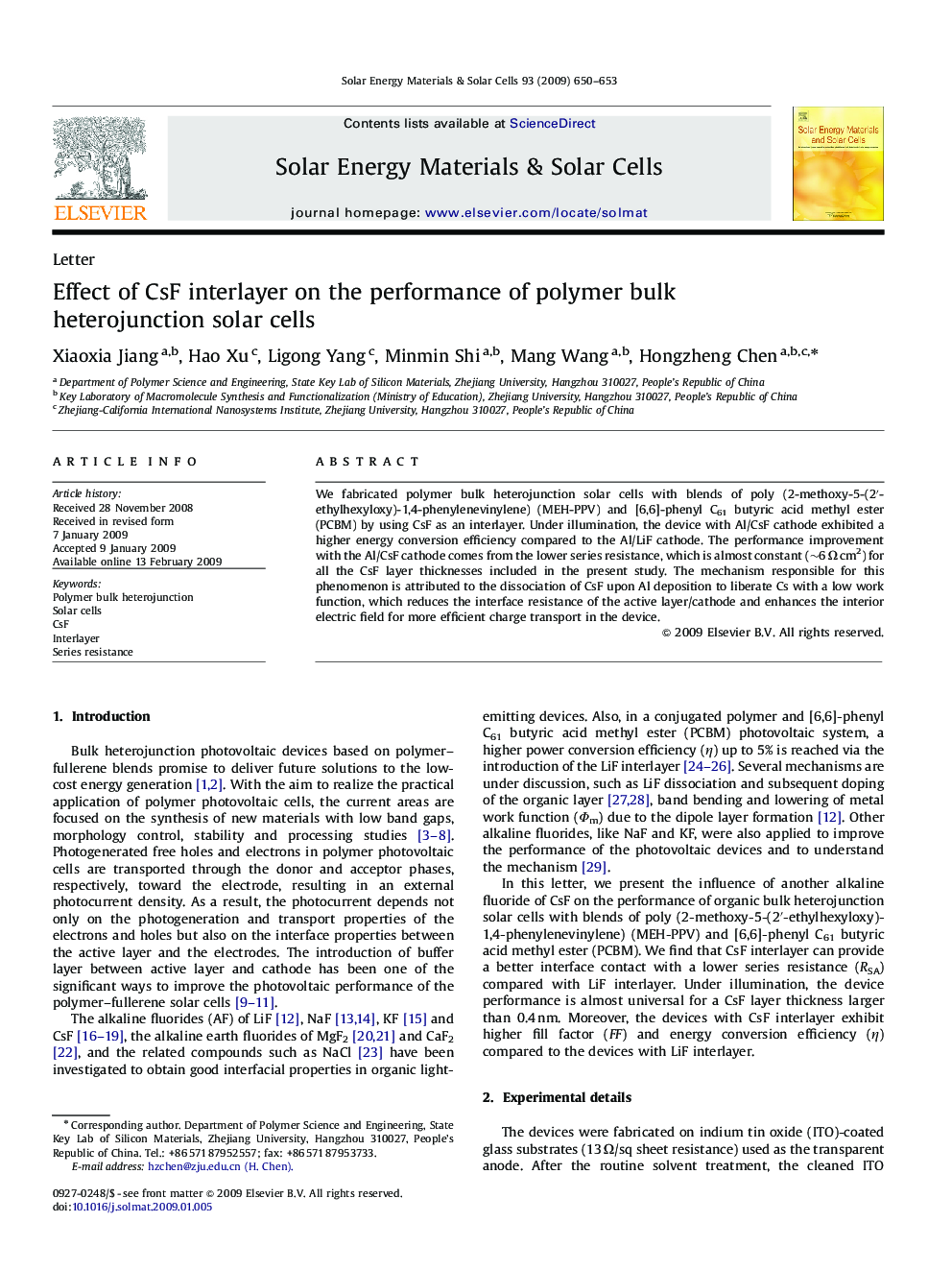| Article ID | Journal | Published Year | Pages | File Type |
|---|---|---|---|---|
| 79889 | Solar Energy Materials and Solar Cells | 2009 | 4 Pages |
We fabricated polymer bulk heterojunction solar cells with blends of poly (2-methoxy-5-(2′-ethylhexyloxy)-1,4-phenylenevinylene) (MEH-PPV) and [6,6]-phenyl C61 butyric acid methyl ester (PCBM) by using CsF as an interlayer. Under illumination, the device with Al/CsF cathode exhibited a higher energy conversion efficiency compared to the Al/LiF cathode. The performance improvement with the Al/CsF cathode comes from the lower series resistance, which is almost constant (~6 Ω cm2) for all the CsF layer thicknesses included in the present study. The mechanism responsible for this phenomenon is attributed to the dissociation of CsF upon Al deposition to liberate Cs with a low work function, which reduces the interface resistance of the active layer/cathode and enhances the interior electric field for more efficient charge transport in the device.
